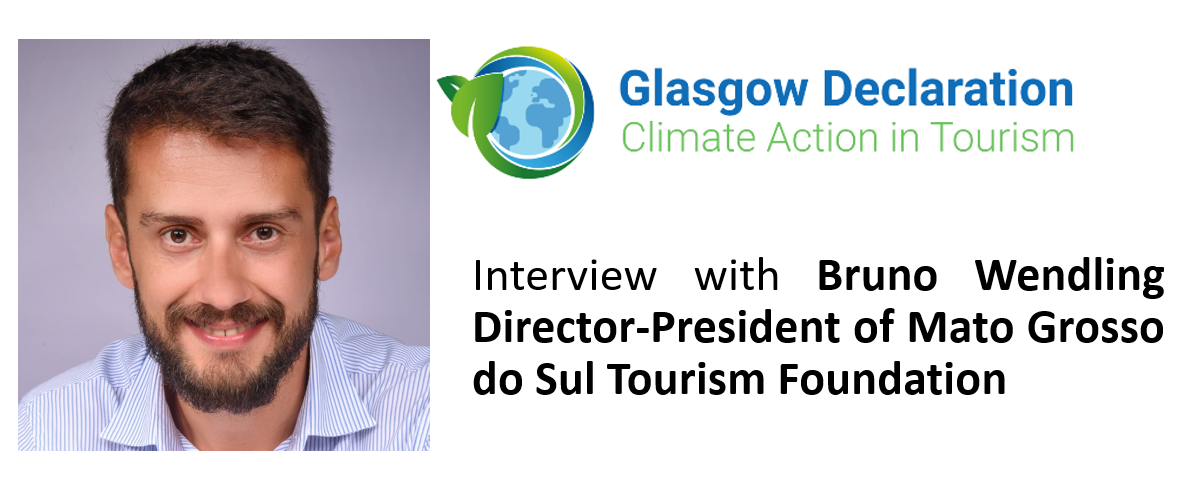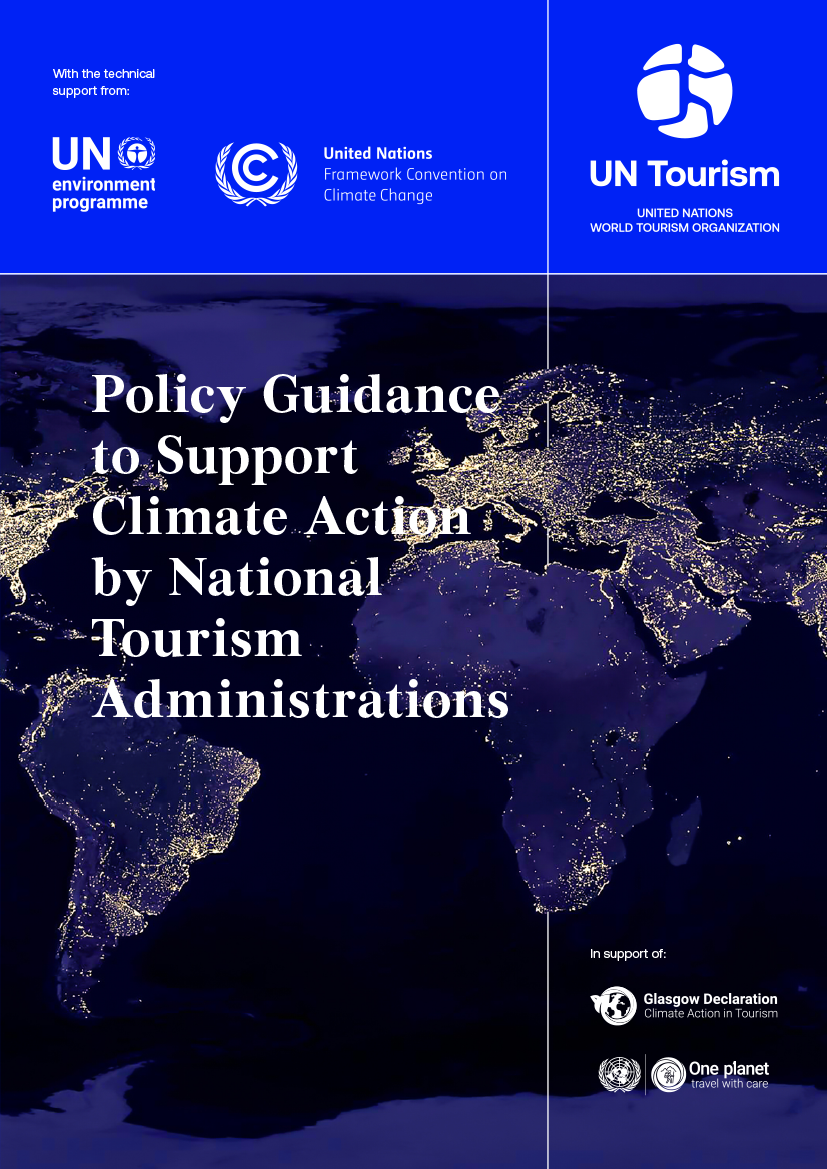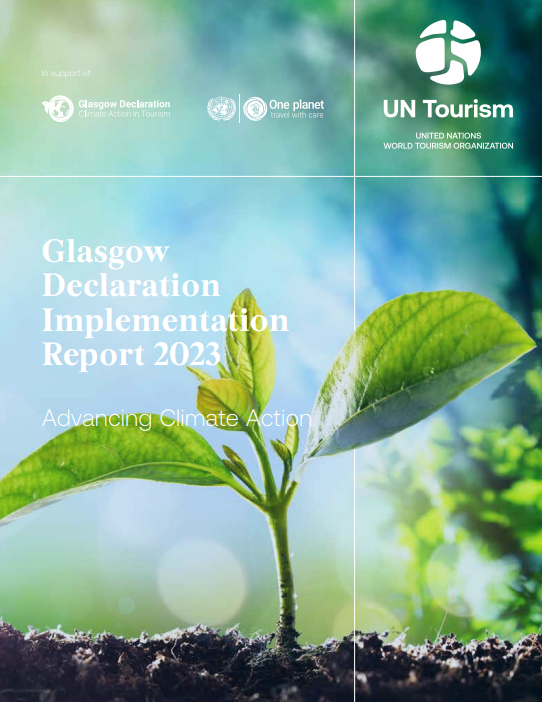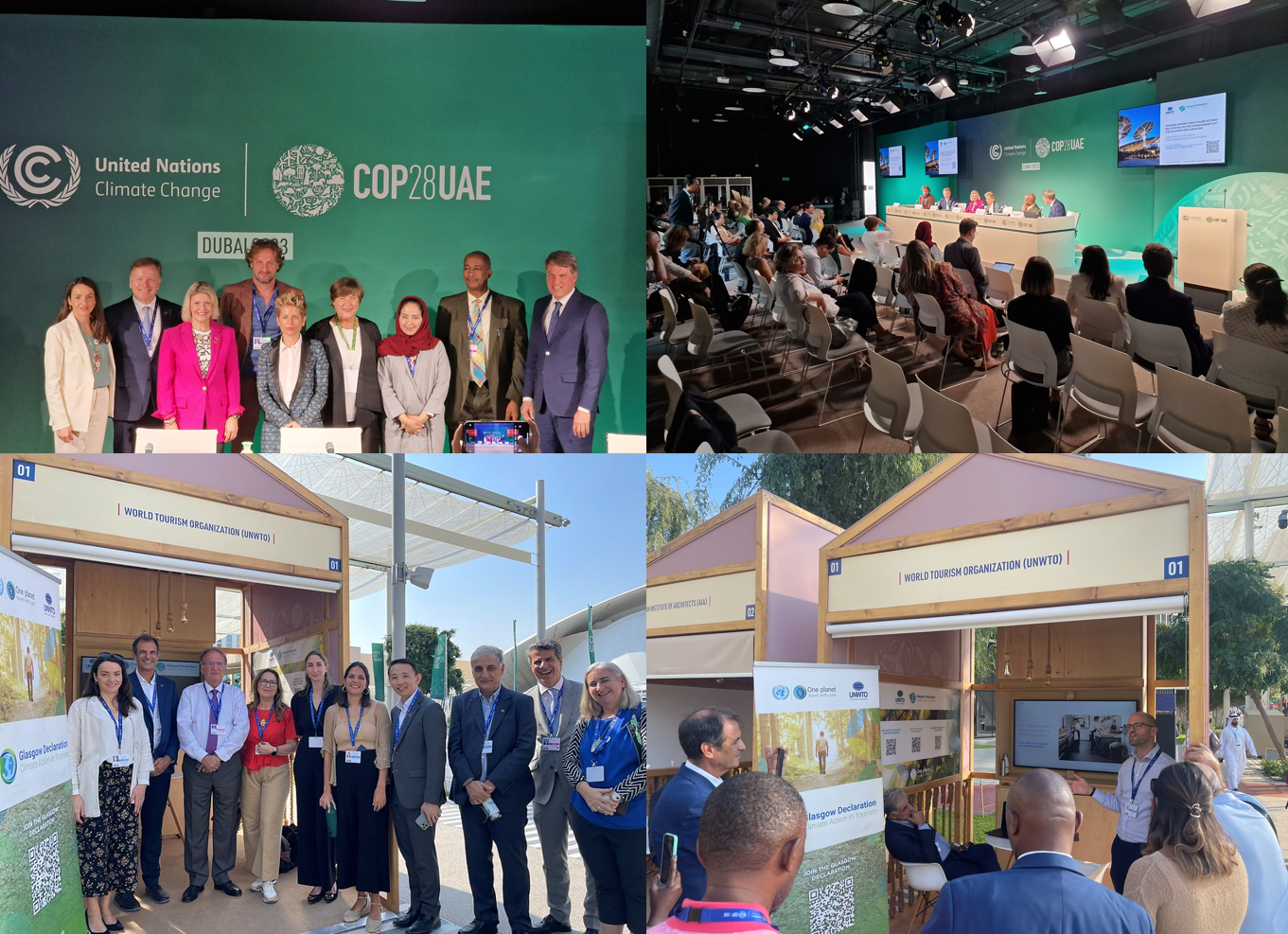Interview with Bruno Wendling Director-President of Mato Grosso do Sul Tourism Foundation, Brazil

We interviewed Bruno Wendling, Director-President of Mato Grosso do Sul Tourism Foundation about climate action in Bonito, a renowned ecotourism destination in Brazil.
“As tourism destination managers, the sooner we mainstream climate action in our development models, the better for local businesses, the performance of the destination and the global environment.”
How do your activities on climate neutrality contribute to the sustainability of your destination?
Based on over two decades of implementing sustainable tourism management practices, Bonito’s efforts to introduce climate action at the core of our destination management model date back to 1995. At that time, Bonito created a Tourism Voucher system designed to control the number of tourists per attraction based on a scientific reference point for tourist carrying capacity . Bonito has since emerged as one of the most lauded ecotourism destinations in the country, and a global refence for sustainable tourism management practices.
Inspired by our signature of the Glasgow Declaration, we partnered with Green Initiative and recently received the accreditation of Bonito as the first Carbon Neutral ecotourism destination worldwide. Climate action is proving to be a fundamental aspect for catalyzing public and private investments. This effort will directly contribute to the progressive decarbonization of Bonito, allowing us to comply with our destination management targets. We need to be ambitious and accelerate our efforts towards Net Zero emissions. We also need to be realistic and pragmatic, in the sense that we need to comply with the targets we propose. In this context, the most important aspect of this process, is the need to decouple the success of economic development with its negative climate impacts. As such, our climate action model for Bonito will help us promote local growth and economic prosperity, while reducing the carbon footprint per tourist, which today stands at 0,73 tons per tourist.
How can tourism support the drive for improved waste management and electric vehicles and thus help to catalyze change throughout Bonito?
We have been able to identify all key components of our destination carbon footprint by following the Guidelines for Climate Action in Tourism Destinations released by Green Initiative in 2022. This science-based reference has put into perspective the relevance of taking action in at least seven different issues, some of them relying heavily on public sector actions, others are being led by the private sector. According to our assessment, the main GHG emission sources are transportation services through fuel consumption (52,36% of total emissions), followed by the decomposition of solid waste (22,64%).
Through our climate-action plan, we are focusing first on solid-waste management (including food waste) and reducing methane emissions at landfills by channelling organic waste to appropriate sites through government and community programs. More importantly, in addition to reducing GHG emissions, the proper treatment of organic waste can provide opportunities to produce valuable products such as biochar, composting, biogas and organic fertilizer production. Local farmers can use organic fertilizers as a substitute for nitrogen-based fertilizers, further slashing GHG emissions from agriculture while complementing ecosystem restoration and reforestation projects currently underway.
Reducing the carbon footprint of cars, trucks, and motorcycles will be vital to achieving Bonito’s climate targets. Vehicle emissions pose an especially complex challenge, and emissions reduction will require sustained investments in electric mobility. We do expect that car rental chains understand that Bonito provides the best scenario for them to test innovation in electric mobility car rental services for tourists, helping us decarbonize this important ecotourism destination.
What measures have you put in place to engage the relevant tourism businesses in Bonito in this work?
Tourism businesses play a fundamental role in all sustainability and climate-smart best practices currently underway in Bonito. We are working with the private sector to make Bonito a cluster for climate-smart innovations in tourism services, which includes improving electric mobility infrastructure, modernizing waste management practices, introducing circular economy models to better manage liquid, plastics and electronic waste, and innovating in climate-positive tourism attractions and services. As part of our joint efforts with the private sector, and with the support of Green Initiative, we are currently measuring local ecosystems restoration potential. Our aim is to attract mainstream ecosystems restoration initiatives/resources for Bonito, which will contribute to both, the recovery of wildlife habitats and the recovery and protection of water sheds. It is important to highlight that most of our key ecotourism attractions are private owned.
What do you think are the key benefits of the carbon neutral certification process for Bonito?
The carbon-neutral certification process has accelerated our learning curve, making us better understand how climate action plays a strategic role in the long-term competitiveness of Bonito as an international ecotourism destination. Through the advisory work and recommendations by Green Initiative, we were able to identify opportunities for attracting green public and private investments, opportunities for innovating in climate and nature smart tourism services, and to connect to the global climate agenda, by supporting international processes such as the Glasgow Declaration and other UNFCCC international efforts. At Bonito, we have reinforced our capacity to manage our carbon footprint, feeling confident that our work is consistent with the Sustainable Development Goal 13 (Climate Action).
Have you put any plans in place to finance the move towards electric mobility and if so can you briefly describe these?
Boosting electric mobility in Bonito will require a significant investment in emerging electric mobility support infrastructure, which combines the need for charging stations, battery management, maintenance, and technical support, among others. The way forward to address these gaps must include public-private collaboration and solutions. In this context, we also hope our certification will open the doors to green financing mechanisms which can support the investments needed to implement our climate action plan. We can say that Bonito is one of Brazil’s most precious ecotourism jewels. To keep it that way for future generations, it requires that we all work together for its conservation. Considering the current climate crisis scenario, we think that Bonito, should get all the support it needs to act as an innovation cluster for climate-smart tourism, this is our vision.
What top tips would you give to other destinations starting out on their climate action journey, particularly related to measurement and climate action financing?
Perhaps the most significant lesson learned through our carbon neutral certification process, is that it formalizes the institutional commitment of Bonito to take climate action seriously, supporting the vision laid out under the Paris agreement and Glasgow Declaration. Furthermore, the certification granted by Green Initiative goes far beyond the sustainability agenda alone, as it also improves fundamental aspects related to the long-term competitiveness of tourism destinations. We must think in a pragmatic way on how to support our tourism operators under this new global reality. This includes helping them prepare to access climate action funding, which involves being able to demonstrate practical measures for reducing their carbon footprint.


